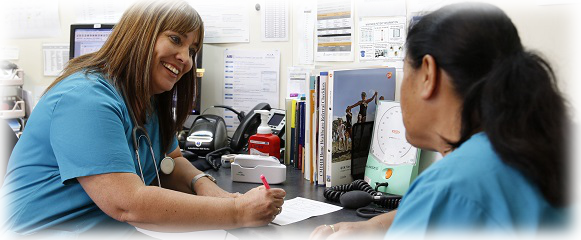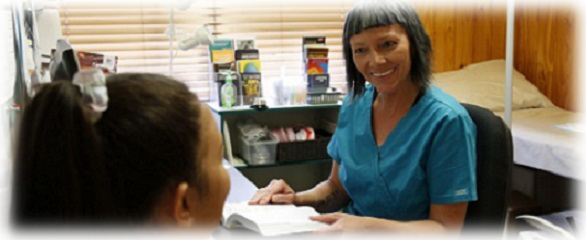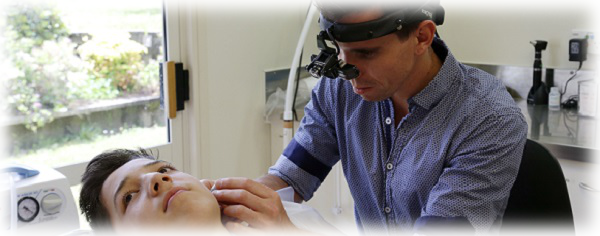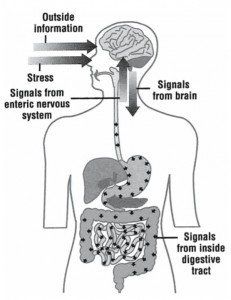October 2014 News
Welcome again to the Millhouse Community and to other readers
Changing Seasons
Two weeks ago I came back from holiday refreshed, having meandered along the rivers Rhine and Danube, lined with vineyards and picturesque castles, intermingled with quaint villages and imperial cities. Our time away was also a memorable opportunity to visit our American family and growing grandchildren. Having fun with friends, rest, and recreation are essential for good health, but it is great to be back at Millhouse.
Before I went on vacation I loaded my Kindle with newly-released medical books. I read again about the amazing 'neuroplasticity' of the brain that enables it to change. How intense exercise, retraining and new learning situations not only improves brain function and memory as we age but also enhances the educational achievement and development in children. I will share more in future newsletters.
In this issue...
- Changing Seasons
- Dr Scott departs
- At Risk Individual programme
- E-appointments
and this month Dr Ric writes about Food and the Gut
Colds and Flu continue
I thought the cold and flu season might have eased but it is still here with a vengeance. Chest infections are lingering; the occasional person has been admitted to hospital with pneumonia and a few even have whooping cough (pertussis)
.Remember Vitamin D for immune protection. (Vitamin D - adults 4000-5000 units daily, that is cholecalciferol 50, 000 unit tab 2 weekly, child vitamin D drops are available at 128 Reception, cost $37.)Be generous with turmeric powder if you are getting a cold and continue to be vigilant with personal hygiene.
Millhouse News
Dr Scott departs
Dr Scott McLaren has given notice that he has accepted an associate position at a GP clinic in Central Auckland. We thank him for his outstanding contribution to the Millhouse community over the last four years.
At-Risk-Individual programme (ARI)
ARI has now been going for two months and we are slowly transferring existing CCM patients on to the new proactive health improvement programme, ARI, as well as selecting those with pressing health needs who may also obtain benefit.
ARI - our Nurse Navigators
It has been a big learning curve for our practice nurses, the 'keystone' workers of the programme, who complete the ARI enrolment, and use the Partners in Health questionnaire to assist in developing 'patient-personal' goals for the electronic health care plan.
Counties Manukau DHB have provided funding, but it is limited compared with the more generous CCM/CarePlus. To sustain the ARI programme we are now charging $22 for doctor consultations, which may be waived in exceptional situations. However all nurse visits are FREE.
Learn more about this...
E-appointments
Don't forget E-appointments which are being used more and more. It is an easy and convenient way to book an appointment on line at www.millhousemedical.co.nz. allowing you to select your doctor and the appointment time.
This Month- Food, the Gut and Microbiome
Every cell in our body needs food to live. The more nutrient-dense our diet, the more effectively each cell in our body will function. Everything we consume - fresh, raw, cooked or contaminated food - is taken into the amazingly complex gastrointestinal tract where it is broken down by chewing, and emulsified by stomach action, allowing salivary and pancreatic enzymes with the gallbladder bile to release the individual sugar (carbohydrate), amino acid (protein) and fatty acid (fats) molecules for assimilation.
vThe gut is a hollow tube which is technically on the outside of the body, being made up of an epithelial layer from the mouth to the anus. It is only one cell thick, is lined by a protective biofilm of bacteria, and actively absorbs food molecules. Just inside the gastrointestinal tract lies the protective immune system, which makes up 70 percent of our body's security network, actively defending against possible invaders
.In the last newsletter I discussed the importance of having a healthy gut microbiome (mainly bacteria) which was introduced by good bacteria from our mother's vaginal secretions and breast milk. Fermented foods and vegetables nourish the protective microorganisms, but a processed refined food diet feeds unwelcome bugs, and antibiotic medication decimates the microbiome.
Each person has a gut 'microorganism fingerprint' that can either protect against disease or predispose us to conditions such as obesity (discussed in the July newsletter), autoimmune disease and other illnesses.
I believe the majority of chronic disease has it origin in poor gastrointestinal health, related to the consumption of a refined Western diet
Our Second Brain
The gastrointestinal tract has been referred to as the 'second brain'. Embedded in the gut wall is a mesh of nerves known as the 'enteric nervous system' (ENS), which can operate autonomously, monitoring physical and chemical changes, releasing numerous nerve stimulating (neurotransmitters) substances, which include acetylcholine, dopamine and serotonin, and sending messages, via the vagus nerve, to the brain. (This is why SSRI antidepressant drugs affecting serotonin receptors affect both the brain and bowel).
The ENS, the original nervous system, has its origin in invertebrates that evolved 500 million years ago. Digestion is a complex business and eating any food is fraught with danger from foreign invaders. Perhaps this is why 80% of the information in the vagus nerve is going upward from the ENS to the brain.
There are also strong links between the gut and our mental state. Researchers in 2006 demonstrated that stimulation of the vagus nerve was an effective treatment for chronic depression in patients who had failed to respond to other treatments.
FODMAP Avoidance Diet
In the 1950's, dietitian Elaine Gottschall's daughter was diagnosed with severe ulcerative colitis and was told only an operation would save her life. Elaine would not accept this was the only option for her daughter, and consulted many doctors. Finally she met Dr Hass, a 92 year paediatrician from New York, who suggested using a simple nutrition approach. Elaine's research of the medical literature supported Hass's advice, and she made careful food changes to her daughter's diet. After two years the colitis was in complete remission. Elaine wrote of her experiences and scientific findings in 'Breaking the Vicious Cycle,' where she recommends using the avoidance 'Specific Carbohydrate Diet' (see Fact Sheets) for irritable and inflammatory bowel conditions.
More recently, in 1999 Dr Sue Sheppard, another dietitian doing postgraduate study in Australia, proposed using a FODMAP avoidance diet for the treatment of Irritable Bowel Disease. IBS is a common ailment that causes pain, bloating, and passage of wind with varying bowel motion frequency from diarrhoea to constipation. Like Elaine Gottschall, Sue believed that it was not food allergy, as some thought, that caused the symptoms but particular carbohydrates that were poorly absorbed and fermented in the bowel producing gas and irritation in susceptible persons.
FODMAPs stand for Fermentable Oligosaccharides, Disaccharides, Monosaccharides and Polyols, foods which include simple (lactose & fructose) and complex sugars (fructans & galactooligosaccharides) and sugar alcohols (polyols).
The FODMAP Avoidance Diet is also worth trying in other situations:
1. Infant reflux and colic may be aggravated by FODMAP foods in mother's diet passing through the breast milk to the baby and causing bloating and pain.
2. Adult indigestion and heartburn can be aggravated by FODMAP fermentation gas placing pressure on the stomach contents, leading to discomfort and acid reflux.
3. Diverticular Disease may be caused by years of FODMAP food fermentation, producing gas and bloating that stretches the bowel, particularly at the site of blood vessel and nerve entry. This leads to blowout diverticular formation.
For more serious inflammatory bowel disease, the Gottshall very low 'specific carbohydrate' may be worth considering alongside other therapies.
The June & July 2012 newsletters contain additional information on dealing with food allergy and food intolerance.
Having a healthy gut is probably one of the most important factors for a long life. In the next newsletter I will discuss whether taking probiotic good bacteria are beneficial or just a waste of money.
Yours in good health,
Dr Richard J Coleman
Download a pdf of this newsletter....
FODMAP DIET - AVOID THESE FOODS
Excess Fructose Honey, Apples, Mango, Pear, Watermelon, High Fructose Corn SyrupFructans Artichokes (Globe), Artichokes (Jerusalem)Garlic (in large amounts), Leek, Onion (brown, white, Spanish, onion powder), Spring Onion (white part), Shallots, Wheat (in large amounts), Rye (in large amounts), Barley (in large amounts), Inulin, Fructo-oligosaccharides.Lactose Milk, icecream, custard, dairy desserts, condensed and evaporated milk, milk powder, yoghurt, soft unripened cheeses (eg. ricotta, cottage, cream, mascarpone).Galacto Oligosaccharides (GOS) Legume beans (eg. baked beans, kidney beans, bortolotti beans), Lentils, ChickpeasPolyols Apples, Apricots, Avocado, Cherries, Nectarines, Pears, Plums, Prunes, Mushrooms, sorbitol (420), mannitol (421), xylitol (967), maltitol (965) and isomalt (953).
NOTE: I highly recommend Avalon Waterways river cruise from Amsterdam to Budapest which we chose after comparing other available options, and were not disappointed.







